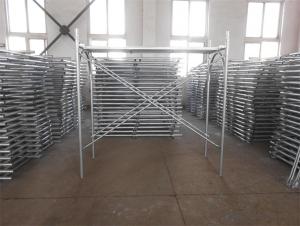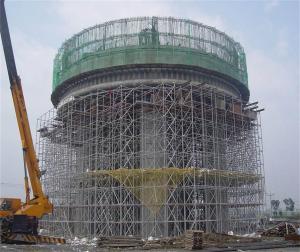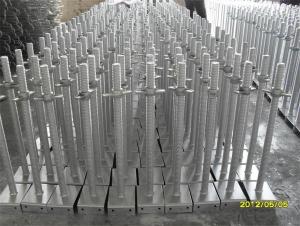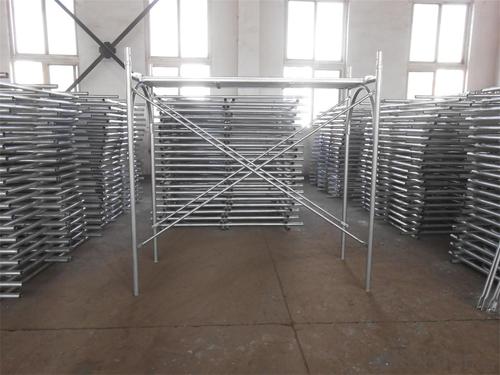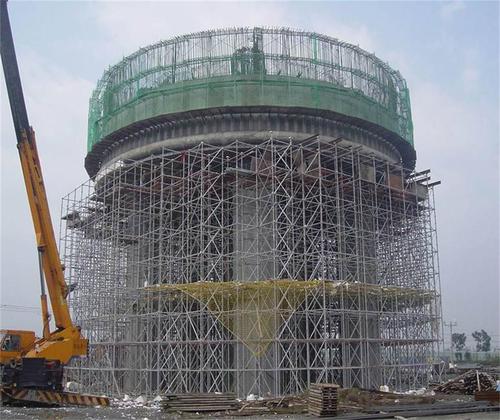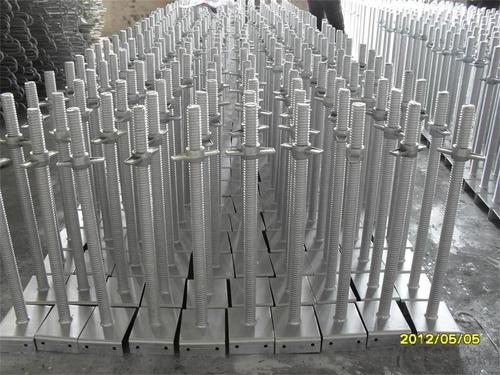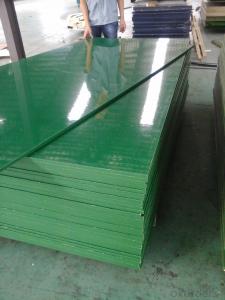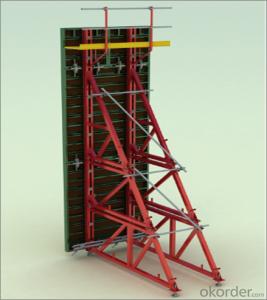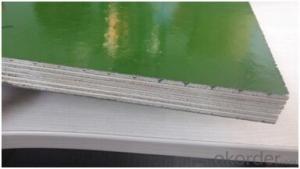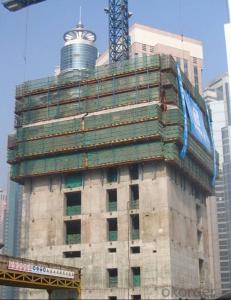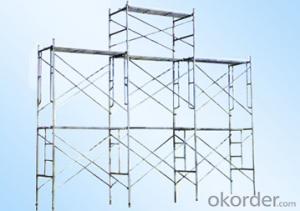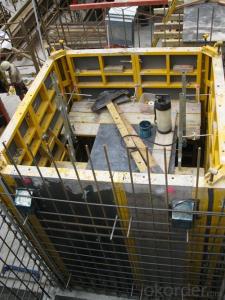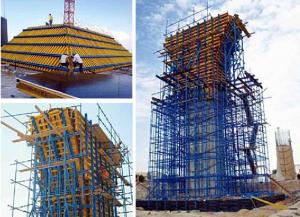Door Scaffolding , Ring lock, Tower Scaffolding with Hot or Cold Galvanized Surface
- Loading Port:
- Shanghai
- Payment Terms:
- TT OR LC
- Min Order Qty:
- 1000 m²
- Supply Capability:
- 100000 m²/month
OKorder Service Pledge
OKorder Financial Service
You Might Also Like
1.Structure of Ring lock Description
Ringlock Scaffolding system is the most popular used Scaffolding system in the world.It will greatly reduce the cost because of the following advantages
Packaging & Delivery
Packaging Details:
Pallet or bag or upon client's request
Delivery Detail:
35days
2.Main Features of Ringlock
It will greatly reduce the cost because of the following advantages
1)Using less pipes
2)Easy to install
3)It can be used again and again for nearly 20years
3.Ring lock product pictures:
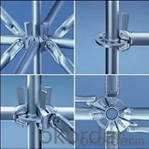
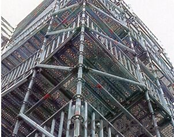
4.Ringlock Product Description
Type: ringlock scaffolding diagonal Brace
specification : Ø48.3×3.20
material:: steel Q235
Finished: Hot DIP galvanized, painted
Diagonal length(m) :Weight(kg)
0.9m * 1.25m 6.28
1.25m * 2.7m 11.45
5.FAQ
We have organized several common questions for our clients,may help you sincerely:
1)How about your company?
CNBM International Corporation, China National Building Materials (Group) Corporation, is one of the largest companies in China building material equipment industry, Our formwork and scaffolding are largely used in both domestic and all over world;
2)How many Scaffolding your company have?
Here comes our 5 types of Scaffolding systems:
- Cup lock Scaffolding(C-Lock Scaffolding)
- Ring lock Scaffolding
-Kwistage Scaffolding
-H-frame Scaffolding
-ID15 Scaffolding Tower, this type Scaffolding is the most widely used in construction, such like bridge.
3)How long can we receive the product after purchase?
Lead time is about 30days after getting the signed PI and deposit.
- Q: How does steel frame formwork affect the overall dimensional accuracy of a concrete structure?
- The dimensional accuracy of a concrete structure can be greatly influenced by the use of steel frame formwork. By providing a strong and sturdy framework, steel frame formwork helps to maintain the desired shape and dimensions of the structure throughout the pouring and curing process. One of the major benefits of steel frame formwork is its resistance to deformation and ability to maintain stability. This means that the formwork will not bend or distort under the pressure of the concrete, ensuring that the structure retains its intended shape and dimensions. This is particularly important for structures with complex shapes or specific dimensional requirements. Moreover, steel frame formwork allows for precise adjustments and alignment during construction. The formwork can be easily modified to ensure accurate dimensions that comply with the design specifications. This level of precision is crucial for structures that require close tolerances or have specific dimensional requirements. The use of steel frame formwork also helps to minimize common issues such as formwork deflection or bulging, which can negatively affect the dimensional accuracy of the structure. The strength and rigidity of the steel frame formwork prevent any unwanted movement or deformation, ensuring that the concrete cures evenly and maintains its intended shape. In summary, steel frame formwork greatly enhances the dimensional accuracy of a concrete structure. Its stability, resistance to deformation, and ability to facilitate precise adjustments and alignment during construction reduce the risk of dimensional errors. By providing a solid framework, steel frame formwork guarantees that the final structure meets the desired shape and dimensions specified in the design.
- Q: Can steel frame formwork be used for high-temperature industrial structures?
- Yes, steel frame formwork can be used for high-temperature industrial structures. Steel is known for its heat resistance and durability, making it suitable for withstanding high temperatures in industrial environments. Additionally, steel frame formwork provides the necessary strength and stability required for constructing such structures, making it a reliable choice for high-temperature applications.
- Q: What are the safety considerations when using steel frame formwork?
- Several important safety considerations should be kept in mind when utilizing steel frame formwork. Firstly, it is crucial to ensure the proper design and construction of the steel frame formwork, ensuring its ability to withstand the loads and pressures exerted during concrete pouring. Any structural deficiencies or weaknesses in the formwork can pose significant safety risks to workers. In addition, workers should receive thorough training and education regarding the assembly, installation, and dismantling procedures specific to steel frame formwork. They must be familiar with the necessary safety measures and precautions, including the use of appropriate personal protective equipment (PPE) such as helmets and safety harnesses, as well as the correct procedures for securing the formwork to prevent collapse or movement. Another safety consideration is the potential for falls from height, as steel frame formwork is commonly used in tall structures. Proper fall protection measures, such as guardrails or safety nets, should be implemented to prevent workers from falling and sustaining serious injuries. Regular inspections of the steel frame formwork should also be conducted to identify any signs of damage or deterioration, such as cracks or rust. Prompt attention should be given to addressing these defects to ensure the integrity and safety of the formwork. Regular maintenance and repairs are essential to maintain the formwork's condition and its ability to safely support the concrete pouring process. Lastly, effective communication and coordination among the construction team are vital to ensure safety when using steel frame formwork. Clear instructions and procedures should be established and communicated to all workers involved in the installation and removal of the formwork. This will help minimize the risk of accidents and ensure that everyone understands their roles and responsibilities. Overall, adherence to proper design, training, inspection, and maintenance protocols, along with the implementation of appropriate fall protection measures, can effectively mitigate the safety risks associated with steel frame formwork. This will provide a secure working environment for all construction workers involved.
- Q: Can steel frame formwork be used in projects with limited formwork storage space?
- Projects with limited formwork storage space can utilize steel frame formwork. This type of formwork is recognized for its versatility and compactness, making it an ideal option. Unlike traditional timber formwork, steel frame formwork is designed to be lightweight and easy to handle, enabling efficient storage and transportation. Moreover, steel frame formwork offers the advantage of reusability, reducing the necessity for additional storage space. Its modular design allows for simple assembly and disassembly, allowing for quick storage when not in use. Additionally, steel frame formwork provides exceptional strength and durability, resulting in a long lifespan and minimizing the need for frequent replacements. Consequently, the amount of formwork material required is reduced, optimizing storage space. In conclusion, steel frame formwork is a suitable choice for projects with limited formwork storage space due to its compactness, reusability, and durability. Its lightweight and modular design facilitate easy handling and storage, maximizing the utilization of available space.
- Q: Are there any limitations to the size or shape of structures that can be constructed using steel frame formwork?
- Yes, there are limitations to the size and shape of structures that can be constructed using steel frame formwork. The size of the structure is limited by the length and dimensions of the steel frames available, as well as the weight-bearing capacity of the formwork system. Additionally, complex and intricate shapes may be challenging to achieve with steel frame formwork, as it is typically designed for more straightforward and repetitive structures.
- Q: Can steel frame formwork be used for both low-rise and high-rise construction projects?
- Yes, steel frame formwork can be used for both low-rise and high-rise construction projects. Steel frame formwork offers durability, strength, and versatility, making it suitable for various types of construction projects regardless of their height. It can be easily assembled and adjusted to accommodate different sizes and shapes of structures, providing a reliable and efficient solution for both low-rise and high-rise construction.
- Q: Can steel frame formwork be used for both temporary and permanent construction?
- Absolutely, steel frame formwork can be utilized for both temporary and permanent construction purposes. This adaptable and sturdy system boasts a multitude of benefits for construction projects. It guarantees remarkable strength, durability, and stability, rendering it highly suitable for enduring utilization in permanent structures. Moreover, the disassembling and reassembling process of steel frame formwork is effortless, making it the perfect choice for temporary structures that require relocation or dismantling within a specific timeframe. Its versatility and adaptability have made it a favored option for diverse construction applications, be it temporary or permanent.
- Q: How does steel frame formwork contribute to better dimensional accuracy in concrete structures?
- Steel frame formwork, which utilizes steel frames to hold formwork panels in place during concrete pouring, offers numerous benefits that directly improve dimensional accuracy in concrete structures. To begin with, the rigidity and stability provided by steel frame formwork guarantee that the formwork panels remain in position without any movement or deformation. This stability prevents any shifting or misalignment of the formwork during concrete pouring and curing, resulting in precise dimensions and accurate alignment of the concrete structure. Moreover, steel frame formwork allows for easy adjustment and customization. The steel frames can be easily modified or resized to accommodate various shapes, sizes, and complexities of concrete structures. This adaptability ensures that the formwork perfectly fits the desired dimensions and contours of the structure, enhancing dimensional accuracy. Additionally, steel frame formwork offers exceptional strength and durability. The use of steel frames provides a robust support system that can withstand the weight and pressure exerted by the poured concrete. This strength prevents any deformation or bending of the formwork, ensuring the concrete structure maintains its intended dimensions. Furthermore, steel frame formwork facilitates efficient and consistent concrete pouring. The formwork panels have smooth surfaces, allowing for easy and uniform distribution of the concrete. This controlled pouring process ensures even distribution, minimizing any inconsistencies or irregularities in the structure's dimensions. Lastly, steel frame formwork is cost-effective and reusable. The steel frames can be dismantled and used for multiple construction projects, reducing overall costs. Reusing the formwork also ensures that the achieved dimensions and accuracy from previous projects can be replicated, maintaining high levels of dimensional accuracy across different concrete structures. In conclusion, steel frame formwork significantly improves dimensional accuracy in concrete structures. Its stability, adjustability, strength, efficiency, and reusability all contribute to constructing a high-quality and accurately built final product.
- Q: Can steel frame formwork be used for both reinforced and non-reinforced concrete elements?
- Steel frame formwork is suitable for both reinforced and non-reinforced concrete elements. This type of formwork offers a sturdy and long-lasting structure that can handle the pressures exerted by fresh concrete while it is being poured and cured. Additionally, it is adaptable and can be effortlessly modified to fit various shapes and sizes of concrete elements. Whether it is used for reinforced concrete elements that necessitate extra reinforcement or non-reinforced concrete elements that rely solely on the concrete's strength, steel frame formwork can provide the essential stability and support for the efficient construction of both types of elements.
- Q: How does steel frame formwork reduce the need for additional support structures?
- Steel frame formwork reduces the need for additional support structures by providing a strong and durable framework that can withstand the weight and pressure of the concrete during construction. This eliminates the need for additional columns, beams, or scaffolding, saving time and resources in the construction process.
Send your message to us
Door Scaffolding , Ring lock, Tower Scaffolding with Hot or Cold Galvanized Surface
- Loading Port:
- Shanghai
- Payment Terms:
- TT OR LC
- Min Order Qty:
- 1000 m²
- Supply Capability:
- 100000 m²/month
OKorder Service Pledge
OKorder Financial Service
Similar products
Hot products
Hot Searches
